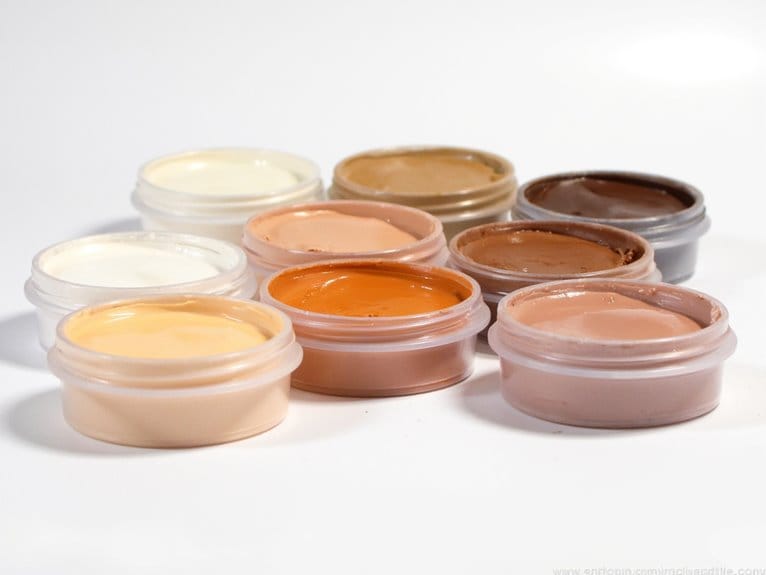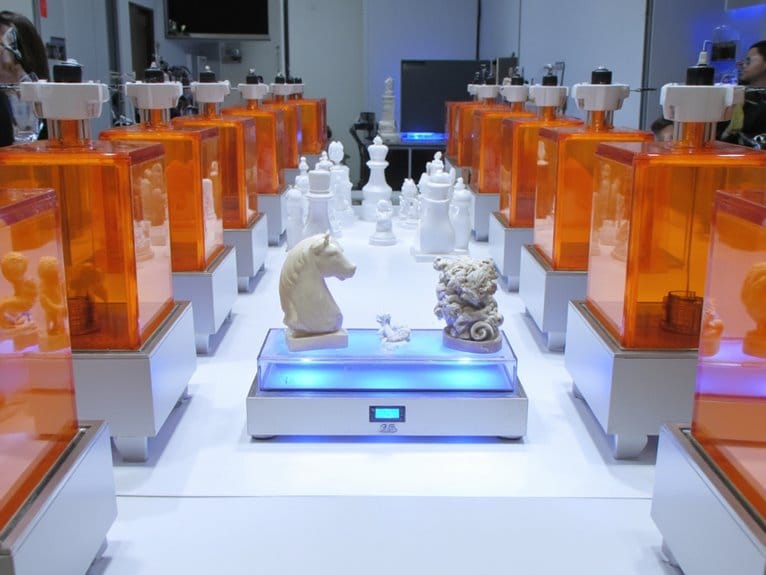We are supported by our audience. When you purchase through links on our site, we may earn an affiliate commission, at no extra cost for you. Learn more. Last update on 4th July 2025 / Images from Amazon Product Advertising API.
Sable brushes, revered for their exceptional softness and precision, have long been the gold standard for artists, but synthetic brushes have emerged as a compelling alternative, offering durability and affordability that challenges the traditional dominance of sable. While sable brushes provide unparalleled sensitivity and nuanced strokes, synthetic brushes compensate with improved stroke control and crisp lines. Ultimately, the choice between sable and synthetic brushes depends on the artist’s style, project demands, and personal values. As artists weigh the pros and cons of each option, a deeper exploration of their unique characteristics and applications can reveal the perfect brush for their artistic vision.
Sable Brushes: The Traditional Choice
Traditionally, artists have opted for sable brushes as their go-to tool for creating masterpieces. With a rich history dating back to the 18th century, sable brushes have been the preferred choice for many renowned artists. The high-quality hair from the sable, a small mammal native to Russia, is renowned for its exceptional softness, flexibility, and durability. This unique combination of properties allows for precise control and subtle nuances in brushstrokes, making sable brushes ideal for delicate, detailed work. Due to their superior qualities, sable brushes have also gained popularity among miniature painters and hobbyists. Their ability to hold a fine point and deliver smooth, even lines makes them the best brushes for miniatures. Whether working on tiny figurines or intricate models, artists and hobbyists alike value the precision and control that sable brushes offer in their detailed work.
The craftsmanship of sable brushes is unparalleled. Skilled artisans carefully select and sort the finest sable hair, then meticulously shape and assemble the brushes by hand. The result is a precision instrument that responds intuitively to the artist’s touch. Sable brushes are particularly suited to watercolor and oil painting, where subtle blending and layering are essential. Their exceptional performance has made them a staple in many artistic disciplines, from portrait painting to landscape art.
Synthetic Brushes: The Affordable Alternative
While traditional sable brushes have long been the gold standard for artists, a more affordable and equally effective alternative has emerged in recent years: synthetic brushes. Synthetic brushes offer an attractive option for artists seeking high-quality brushes without the hefty price tag. Despite the lower cost, synthetic brushes are often praised for their ability to mimic the performance of natural sable brushes. They are also easier to clean and maintain, making them a practical choice for artists who value convenience. However, it is important to note that natural brushes are still preferred by some artists for their superior ability to hold and release paint, as well as their longevity. These are just a few of the pros of natural brushes that continue to make them a popular choice in the art world.
| Feature | Synthetic Brushes |
|---|---|
| Material | Nylon, polyester, or taklon fibers |
| Durability | Resistant to wear and tear, easy to clean |
| Price | Notably lower than sable brushes |
In terms of brush quality, synthetic brushes have made substantial progress, offering a range of affordable options that rival their sable counterparts. Many synthetic brushes are made from durable materials such as nylon, polyester, or taklon fibers, which provide a smooth, even application of paint. Additionally, synthetic brushes are often easier to clean and maintain, making them a practical choice for artists. With their impressive performance and affordable prices, synthetic brushes have become a popular choice for many artists.
Performance Comparison: Sable Vs Synthetic
In the domain of artistic expression, the choice of brush can profoundly impact the outcome of a piece. In terms of performance, sable and synthetic brushes exhibit distinct characteristics that set them apart. Sable brushes are renowned for their exceptional brush sensitivity, allowing artists to achieve nuanced, delicate strokes with ease. This heightened sensitivity enables artists to convey subtle emotions and textures, making sable an ideal choice for portrait and landscape work.
In contrast, synthetic brushes, while still capable of producing excellent results, lack the same level of sensitivity. However, they compensate with improved stroke control, making them well-suited for bold, expressive works and heavy layering. Synthetic fibers tend to hold their shape better, allowing artists to maintain consistent strokes and achieve crisp, clean lines. Ultimately, the choice between sable and synthetic comes down to the artist’s personal style and the specific demands of their project. By understanding the performance differences between these two brush types, artists can select the best tool for their creative vision.
Durability and Maintenance Differences
Brush lifespan and upkeep requirements are pivotal considerations for artists, as they substantially impact the overall cost and convenience of working with either sable or synthetic brushes. Sable brushes, renowned for their exceptional quality, typically have a shorter brush lifespan compared to their synthetic counterparts. This is primarily due to the natural fibers’ susceptibility to wear and tear, particularly when exposed to harsh cleaning products or excessive water. Consequently, sable brushes require more delicate maintenance to prolong their lifespan.
In contrast, synthetic brushes are more resilient and can withstand the rigors of frequent cleaning and use. Their man-made fibers are less prone to damage, making them a more durable option for artists who prioritize convenience. However, this durability comes at the cost of performance, as synthetic brushes often struggle to match the precision and responsiveness of their sable counterparts. Cleaning challenges also arise with synthetic brushes, as their smooth surfaces can cause paint to cling, making thorough cleaning a tedious task. Ultimately, the choice between sable and synthetic brushes hinges on the artist’s priorities: exceptional performance or low-maintenance convenience.
The Cruelty-Free Factor: A Moral Dilemma
Sable brushes, prized for their exceptional performance, have a moral dimension that cannot be overlooked. The use of animal hair in their construction raises ethical concerns, particularly among vegan artists who prioritize animal welfare and environmental sustainability. The production of sable brushes involves the harvesting of hair from animals, often in inhumane conditions, which can lead to animal suffering and even death.
Vegan artists, in particular, face a moral dilemma when choosing between sable and synthetic brushes. While sable brushes offer superior performance, their use comes at the cost of animal welfare. Synthetic brushes, on the other hand, offer a cruelty-free alternative, but may compromise on performance. This moral compromise can be challenging, especially for artists who rely on their brushes to create their work.
Ultimately, the decision between sable and synthetic brushes depends on individual values and priorities. While sable brushes may offer exceptional performance, the moral implications of their production cannot be ignored. Vegan artists, in particular, must weigh their creative needs against their commitment to animal welfare and environmental sustainability.
Choosing the Right Brush for You
Five key factors should guide your decision when selecting the ideal brush for your artistic needs. A well-informed brush selection can profoundly impact the quality of your artwork, making it vital to weigh several pivotal aspects.
- Brush type: Determine whether you need a brush for oil, acrylic, watercolor, or mixed media. Different brush types are designed to handle specific paints and techniques.
- Bristle material: Decide between natural (sable, mongoose, or hog) or synthetic fibers, each with their unique characteristics, advantages, and drawbacks.
- Brush size and shape: Choose a brush that suits your painting style, from fine details to broad strokes.
- Personal preference: Ultimately, the right brush is one that feels comfortable in your hand, allowing you to focus on your creative process.





